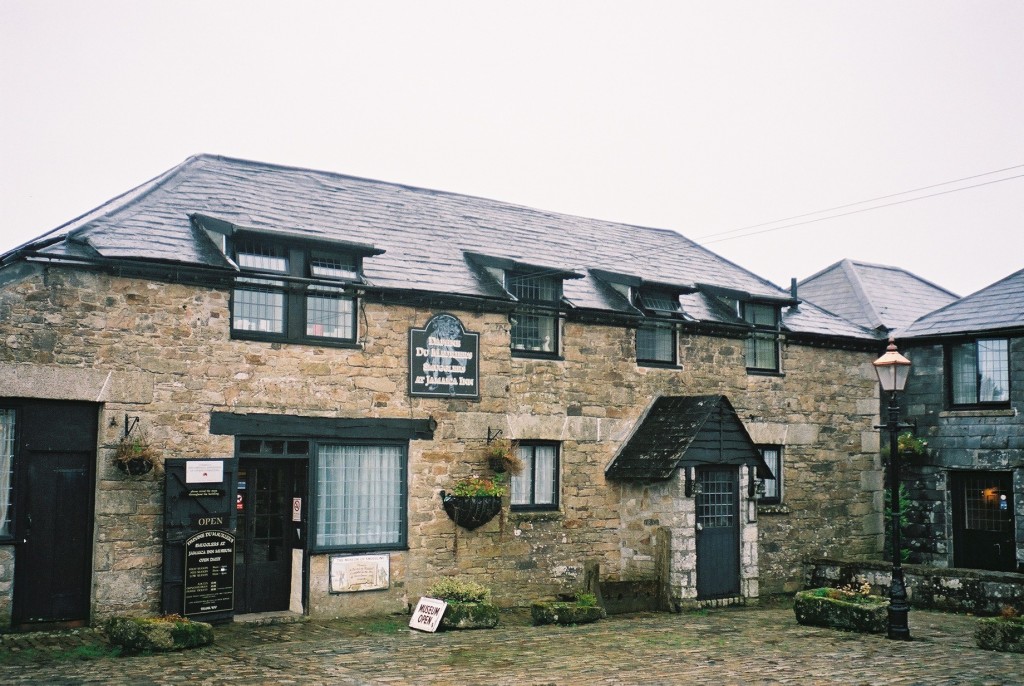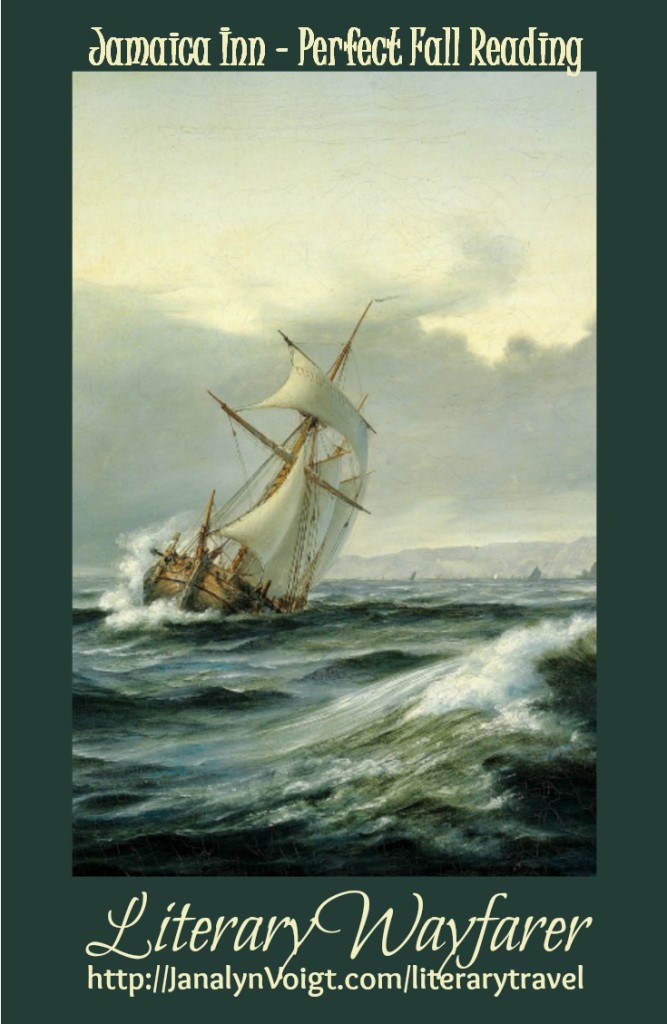Jamaica Inn by Daphne du Maurier
If ever there was a season to read Jamaica Inn by Daphne du Maurier, this would be it. Blustery winds, fretful skies, and chilly nights lend a certain atmosphere in keeping with the drama of this story.
A true thriller, Jamaica Inn derives tension not from macabre deeds, although it has its share, but from Bodmin moor itself, personified in page after page of description that nowadays would earn a writer frowns in some circles. I relished every word of these exquisitely executed passages. They drew me into the story like nothing else. When the heroine, Mary Yellan, gazed out over the moors, I was right there, beside her, with the strange winds moaning in my ear.
As an author, I’m taking notes. Our modern literary world is full of rules for writers, stipulations that were unknown to earlier authors. I’m glad for their sake, because rules tend to kill creativity. Jamaica Inn compels the reader, I believe, because its creativity blends with the author’s life experience.Descriptions of the moor ring true because they were drawn from impressions Daphne du Maurier gained during a misadventure she suffered. While staying at the real Jamaica Inn, which still provides sustenance to Cornwall’s travelers today, Daphne and a friend went riding on Bodmin moor. A sudden fog descended, disorienting the two young ladies. Darkness fell, and they lost their way completely. The situation could have become dire had they failed to keep their wits about them. They gave the horses their heads so they would carry them safely through the boggy terrain and back to the the stables.

Jamaica Inn has a bold heroine not unlike its author. Cat-like, Mary Yellan follows her curiosity straight into trouble. Jem Merlyn, the hero, is sigh-worthy despite some strange ideas that seem to have come from the time this book was written. That would be 1936, in case you are wondering, but the story is set in 1820. Mary cleans up his pigsty of a house, and when he orders her to cook for him, she does it. That sort of thing probably wouldn’t fly today. This is a vintage book, after all, and should be read with that in mind.

I had questions about the heroine’s motivations for remaining at Jamaica Inn when it’s clearly in her best interests to leave, but the readership this story was written for thought a great deal more about family ties than we do currently, so in that context, it is plausible.
The wreckers of the Cornish coast have intrigued me since I learned about them by reading The Wreckers, part of Ian Lawrence’s High Seas Trilogy. These were ruffians were said to use false lights in order to lure ships onto rocks near the shore. Salvage rights to sunken vessels were a prize men were reputedly kill for, and any survivors might not live long. Dead men tell no tales. I use this concept myself in DawnSinger and WayFarer
, the first two books in my epic fantasy series, Tales of Faeraven. In those stories, wreckers haunt the Coast of Bones and indirectly shape the plot.
While the traditional idea about wreckers provides interesting fodder for novels, it’s only fair to mention Cornish Wrecking, 1700-1860: Reality and Popular Myth. In its pages, the author, Cathryn J. Pearce, busts the myth of Cornish wreckers as akin to the fiends of hell. Read it if you must. :o)
Recommended Reading
I recommend Jamaica Inn by Daphne du Maurier as a fall or winter reading pick. The story is a romantic adventure that is just right to warm and thrill you. Read it when the night wind moans.
Note: This article contains my Amazon affiliate links. Purchasing items on Amazon through the links I provide is a simple way at no additional cost you can support this site.
If you enjoyed this post, I’d be pleased for you to share this image at social sites with a link back to this post to let others know. Thanks for reading!


